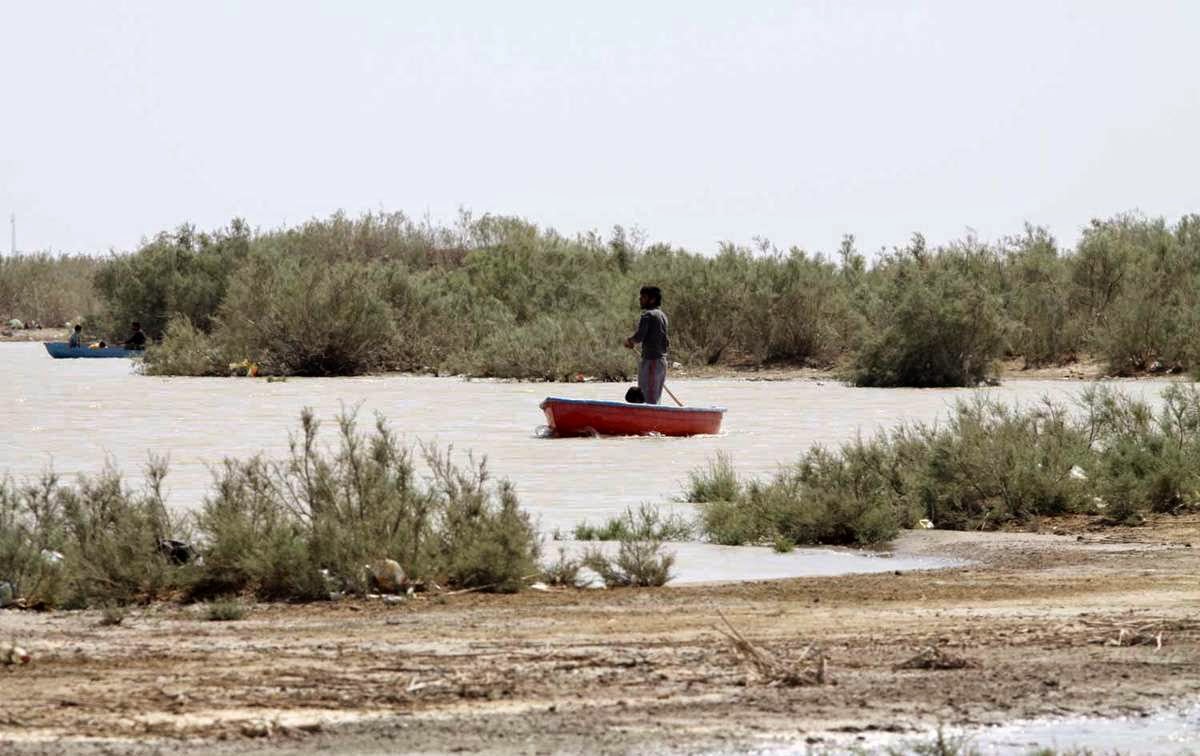Hamoun Wetlands in Sistan-Baluchestan Province was flooded with 20 million cubic meters of water on Saturday, about a month after the same amount of water was released into the imperiled wetlands.
The measure marks the completion of the Second Phase of a three-phase plan by the Department of Environment to save the drying lagoons and combat the intense dust and sandstorms thrashing the province for years.
“Filling up the wetlands helps restore their ecological balance and addresses the dust storms crisis,” Saeed Mahmoudi, the head of the provincial office of DOE, was quoted as saying by ISNA on Tuesday.
Hamouns are one of the major domestic sources of dust and sandstorms in southeastern Iran, battering major cities such as Zahedan and Zabol, which was ranked by the World Health Organization as the most polluted city in the world (based on PM2.5 concentration) earlier this year.
Zabol is also a victim of sandstorms originating in Pakistan and Afghanistan. These conditions are caused by the so-called “120-day winds” in the warmer months and are exacerbated by the desiccation of Hamoun Wetlands.
The Energy Ministry, which is carrying out the plan, supplies the water from underground tables and wells.
Officials hope to implement the third and final phase of the plan, which includes releasing another 20 million cubic meters of water into the wetlands, before autumnal rains begin.
A recent report suggests that the wetland, prior to the implementation of the first phase of the plan, contained more water than last year, which indicates that efforts to revive the lake are seemingly working.
Hamouns are trans-boundary wetlands on the Iran-Afghanistan border and constitute three lakes: Hamoun-e Helmand, which is entirely in Iran; Hamoun-e Sabari on the border; and Hamoun-e Puzak, which is almost entirely inside Afghanistan.
The three lakes are linked and fed by water from Afghanistan’s Helmand River.
The construction of dams and canals in Afghanistan has led to water being drawn for agriculture in the Afghan provinces of Kandahar, Helmand and Nimrooz, causing water levels in the lakes to plummet.
To make matters worse, four reservoirs were built within Iran, diverting more water and speeding up the desiccation of the wetlands.
With an area of about 50,700 square kilometers, the interconnected wetlands were considered the largest freshwater lake across the Iranian Plateau.
To attract global attention to the dire state of the wetlands and secure funds from international organizations, Iran is planning to nominate the Hamouns to UNESCO’s Man and Biosphere Program.


